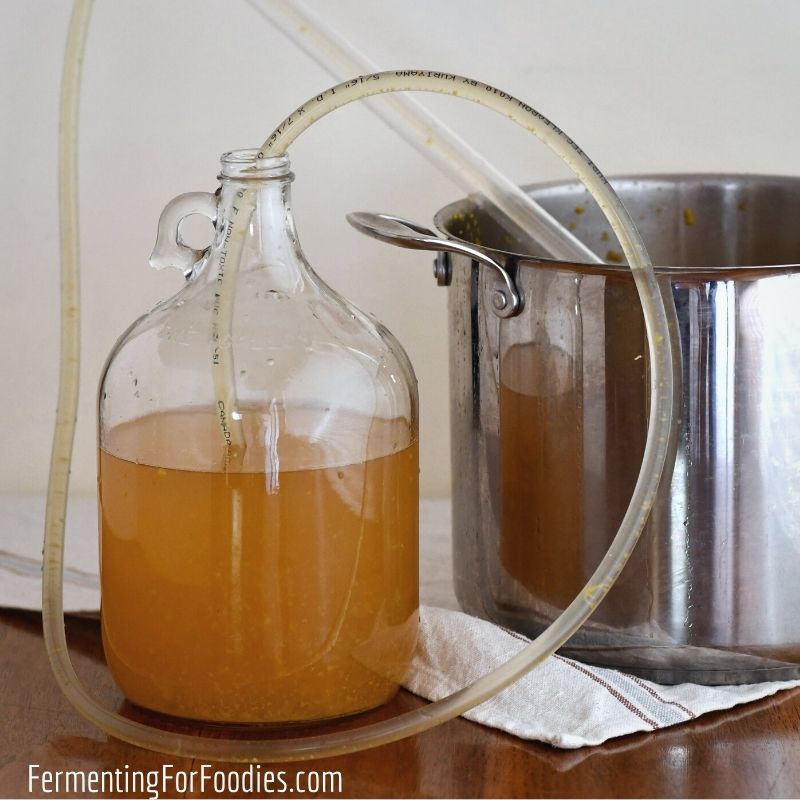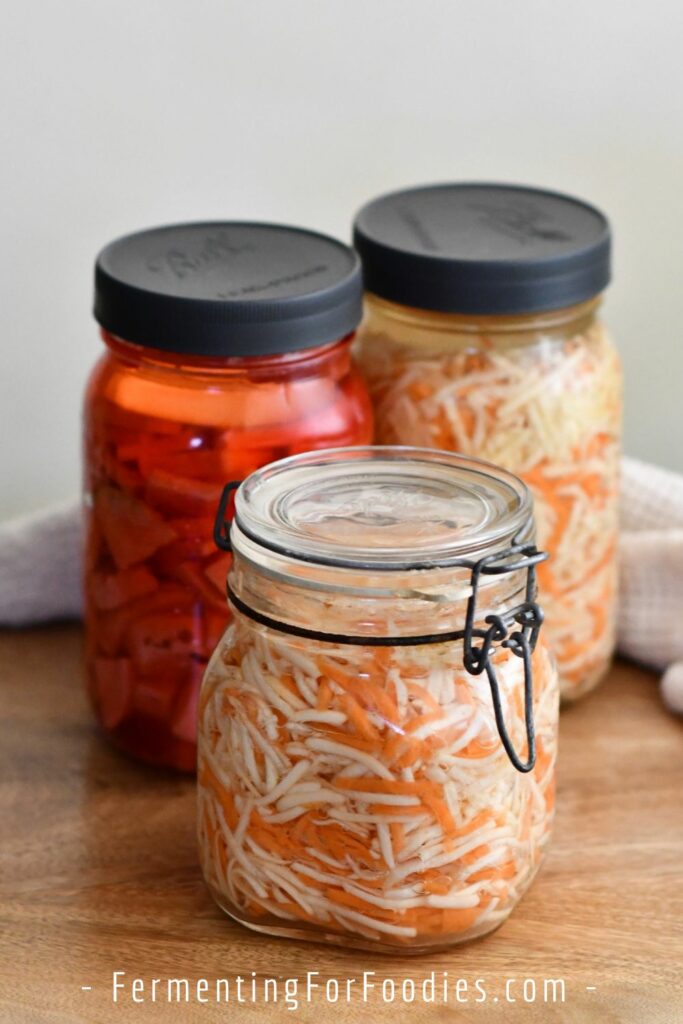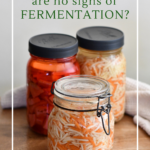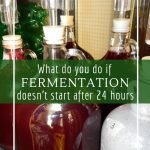Wondering what to do when there is no fermentation after 48 hours? Whether you’re making sourdough, ginger beer, or kombucha, here’s what you need to know to fix a stalled ferment.

Fermentation is a mix of science and art. While it’s easy to follow a recipe and use precise measurements, many other factors can influence the outcome of a ferment. Often it’s these subtle variations in flavor are one of the foodie joys of eating fermented foods!
A few of the less controllable factors in fermenting include:
- variations in the fermenting culture
- indoor air-quality and wild cultures
- temperature and humidity
Fixing Fermentation Problems
This post is part of a series of posts on fermentation problems. Other topics include:
No Fermentation?
One of the common concerns is what to do if there are no signs of fermentation after 24 to 48 hours.
No one likes a stalled ferment.
Here’s an overview of the most common reasons why there might be no fermentation or stalled fermentation, and what you can do about it.
1. Expectations
Probably the most common reason why people are concerned about the lack of fermentation is because of their expectations.
Not all ferments actively bubble. And sometimes the photos that accompany a recipe aren’t accurate. While I only ever use photographs that I took myself, there are a surprising number of food bloggers who use fake photos.
Here are a few types of ferments that might not meet your expectations:
- Gluten-free sourdough is usually not as bubbly as regular sourdough. The size of the bubbles will depend on the type of flour mix used. Gluten-free sourdough is ready when it smells sour.
- Ferments that use apple cider vinegar as a culture don’t bubble like salt-brined ferments.
- Most store-bought dairy products contain thickeners and other additives. So homemade sour cream, milk kefir, and yogurt won’t be as thick as store-bought.
- Beer, wine, and cider are very active the first two weeks. After that, they slow down, but it doesn’t always mean fermentation has completely stalled. It’s just not as active.
2. Time
It takes time to ferment, particularly if it’s your first time making a particular type of ferment. So give your recipes the time required to get going. Sometimes it can take up to a week for a ferment to really start bubbling.
This is particularly true for wild-culture-based ferments. Even if you start with a store-bought culture, the wild culture in your home matters a lot. So if it’s your first time making sourdough, ginger bug, or tepache, then expect it to take 5 to 10 days to start fermenting actively. See the section below on indoor air quality for more information.

3. Culture
The health and vigor of your culture will really impact how quickly your ferment starts to bubble.
- The most common cause of culture death is accidentally cooking it. Don’t stir your yogurt culture into milk that is hotter than 110F (40 C). Don’t add yeast to your beer or wine before it cools to 70F (21C).
- A culture needs to be fed regularly to be healthy and vigorous. If you forgot your kombucha SCOBY in the back of the fridge for a few months, it won’t be as healthy.
4. Water
Using heavily chlorinated water can stall or prevent fermentation. The goal of chlorinating water is to provide safe drinking water by killing all bacteria and other pathogens.
Unfortunately, simply passing your water through a charcoal filter isn’t always the best way to filter it. Here’s a whole post on filtering water for fermentation.
5. Air-Quality
Many ferments rely on the wild yeasts and bacteria that live in your house. Here are a few reasons why your home might not contain the right cultures for fermenting:
- If you are a newbie fermenter, then your house might not have the right strains of yeast and bacteria, so you may struggle to get your ferments to colonize. Keep fermenting! It will slowly change the makeup of wild cultures in your home and you’ll find that it will become easier and easier to kick-start a ferment.
- It’s harder to catch a wild culture in heavily polluted cities.
- Hepa (or similar) air filtration systems will remove all wild yeasts and bacteria.
- Antibacterial cleaning supplies also kill wild fermentation cultures.
- Mold issues in the walls and ceilings of a home can contaminate ferments. To prevent mold, stick with ferments that can be made in a Fido jar or capped with an airlock. (Note: Pickle pipes aren’t reliable at preventing contamination).
6. Temperature
Most ferments have an ideal temperature range. If it’s cold in your home, then the ferment will slow down or stop. While it’s not always possible to maintain the right temperature, do your best.
- Keep ferments warm by placing them on top of your fridge or next to your water heater.
- Keep ferments cool in a dark closet, garage, or cellar.
- Here’s a post on how to keep ferments cool during a heat wave.


Hi,
I started make apple cider vinegar in October 20. Now i find out on the top of the vinegar white collar mod like a spider’s web. Unfortunately i can not attached the picture. Can you support me is it normal or not.
Thank you
Javid
I often get kahm yeast on my ACV. You can see a picture of it here: https://www.fermentingforfoodies.com/kahm-yeast-mold/ Does that look like what you have? It’s not a problem and will go away as the ACV becomes more acidic. Hope that helps!
Hi,
Thank you for your quick support.
Yes it looks like on you picture. I made the photo how can I send to you just to be sure.
Regards,
Can you send it to me on Facebook, Pinterest or Instagram?
Hello
Yes I can could you provide your Instagram info
Regards
Sure! You can find me at: http://instagram.com/readingfoodie/ I usually check it about twice a week, but I’ll look for your message today/tomorrow. Cheers!